Holographic displays: then and now
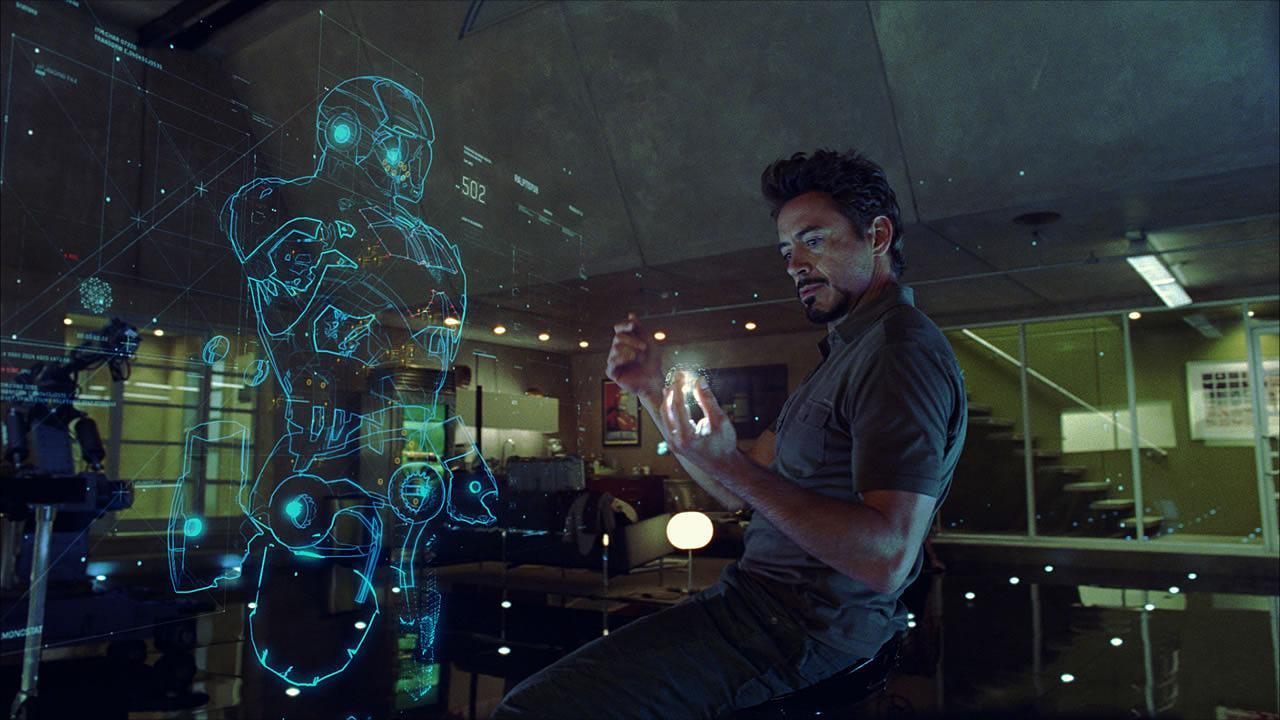
Run simulation software and display a full-size model for editing in space. Turn on the communicator and talk not with a flat image of the person you are talking to in a video call, but with its volumetric projection through which your favorite carpet shines through. Move the curtain aside and see the weather forecast, traffic jam situation on the window pane, and in general, how it is. Start the car engine and receive additional alerts on the road marking, possible dangers and other important information on the windshield section.
If earlier all this was the lot of science fiction writers, now this has moved from the category of "Science Fiction" to the category of "Near Future". We will try to talk about how modern scientists are approaching the century of holography, how it all began and what difficulties holographic technologies are experiencing at the moment, in this post.
How holographic images are created
The human eye sees physical objects, since light is reflected from them. The construction of a holographic image is based precisely on this principle - a beam of reflected light is created that is completely identical to that which would be reflected from a physical object. A person, looking at this beam, sees the same object (even if he looks at it from different angles).
Holograms of higher resolution are static patterns, the “canvas” of which is a photopolymer, and the “brush” is a laser beam that changes the structure of photopolymer materials one-time. As a result, the photopolymer processed in this way creates a holographic image (light falls on the plane of the hologram, the photopolymer creates its subtle interference pattern).
By the way, about the interference itself. It arises if in a certain space a series of electromagnetic waves is formed, for which the frequencies coincide, and with a rather high degree. Already in the process of recording a hologram in a specific area, two waves are added - the first, reference, comes directly from the source, the second, the object - is reflected from the object. A photographic plate with sensitive material is placed in the same region, and a pattern of darkening bands corresponding to the distribution of electromagnetic energy (interference pattern) appears on it. Then, the plate is illuminated with a wave that is close in characteristics to the reference one, and the plate converts this wave to close to the object wave.
As a result, it turns out that the observer sees about the same light that would be reflected from the original recording object.
Brief historical background
It was the year 1947 . India gained independence from Britain, Argentina granted women the right to vote, Mikhail Timofeevich Kalashnikov created his famous automatic machine, John Bardin and Walter Bratteinomiz conduct an experiment to create the world's first operational bipolar transistor, and production of Polaroid cameras begins.
And Dennis Gabor gets the world's first hologram.
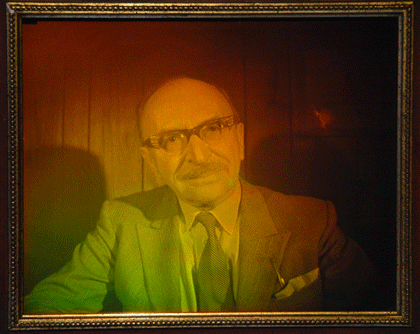
In general, Dennis tried to increase the resolution of electron microscopes of that era, but in the course of the experiment aimed at this, he received a hologram.
Alas, Gabor, like many minds, was a little ahead of his time, and he simply did not have the necessary technology to get holograms of good quality (this cannot be done without a coherent light source, and Theodor Meiman will demonstrate the first laser on an artificial ruby crystal only for 13 years later).
But after 1960 (a red ruby laser with a wavelength of 694 nm, pulsed, and helium-neon, 633 nm, continuous) things went much more vigorously.
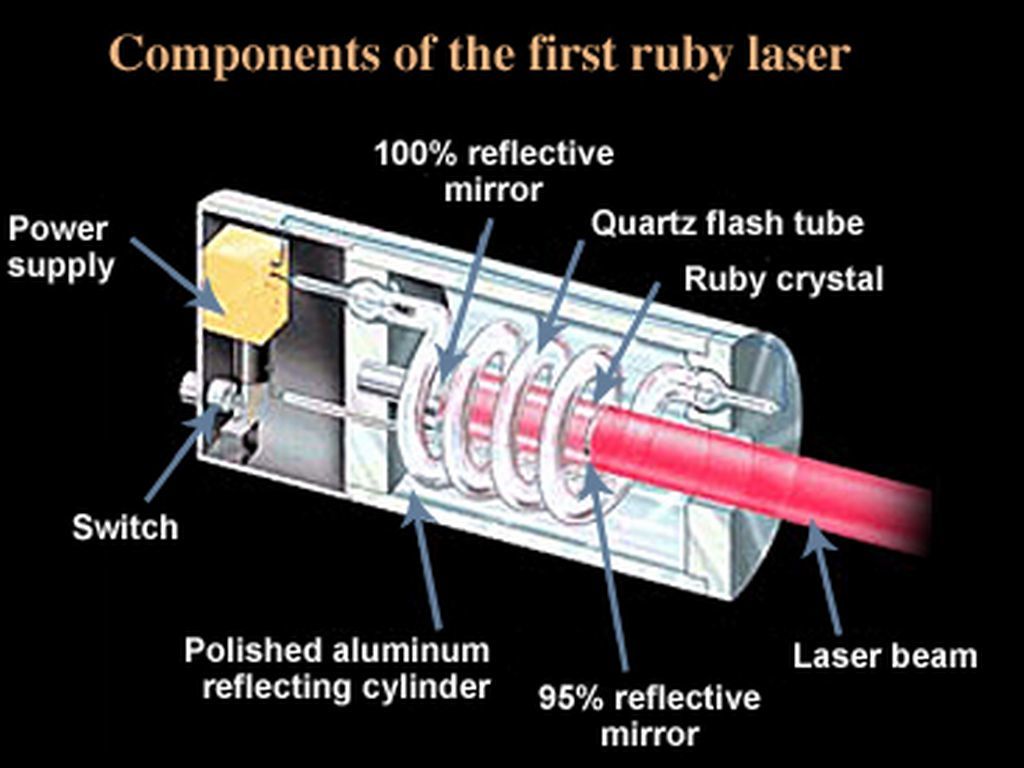
1962 . Emmett Leith and Juris Upatnieks, Michigan Institute of Technology. Creating a classic hologram recording scheme. Transmission holograms were recorded - during the restoration of the hologram, light was transmitted through the photographic plate, but some of the light reflected from the plate also created an image that was visible from the opposite side.
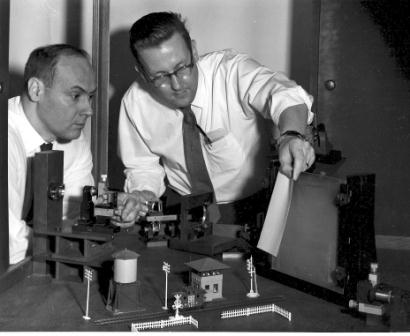
1967 . The first holographic portrait is recorded using a ruby laser.
1968 . The photographic materials themselves are also being improved, thanks to which Yuri Nikolaevich Denisyuk develops his own recording scheme and receives high-quality holograms (reconstructed the image by reflecting white light). Everything goes quite well, so much so that the recording scheme is called the Denisyuk Scheme, and the holograms are the Denisyuk Holograms.
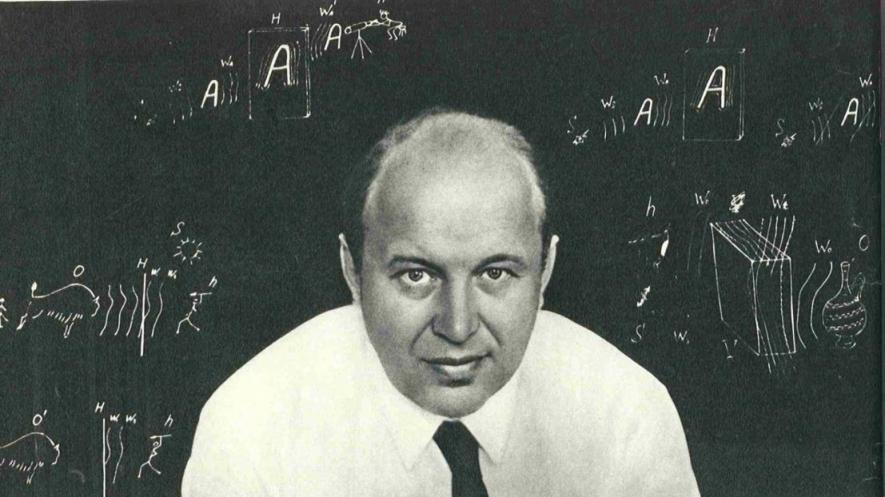
1977 . The multiplex hologram of Lloyd Cross, consisting of several dozen camera angles, each of which can be seen only from one angle.
Pluses - the dimensions of the object that you want to record are not limited to the laser wavelength or the size of the photographic plate. You can create a hologram of an object that does not exist (that is, simply by drawing an invented object in several angles at once).
Cons - the lack of vertical parallax, you can view such a hologram only along the horizontal axis, but not from above or below.

1986 . Abraham Seke realizes that there is no limit to perfection, and suggests creating a source of coherent radiation in the near-surface region using x-ray radiation. The spatial resolution in holography always depends on the size of the radiation source and its remoteness from the object - this made it possible to restore the atoms that surrounded the emitter in real space.
Now
Today, some prototypes of holographic video displays work in much the same way as modern LCD monitors: they scatter light in a special way, forming pseudo-3D, and not create an interference picture. What is the main minus of this approach connected with? Only one person sitting at the right angle to the monitor can properly evaluate such a picture. All other viewers will not be so impressed.
Of course, lovers of science fiction and new technologies sleep and see how holographic displays become the same familiar thing as wifi at home or the camera in a smartphone, comparable to not the worst soap dish. And although the ideal hologram in the understanding of the majority is not really today or tomorrow, developments on this topic are already underway.
Institute of Science and Advanced Studies, Korea. A working prototype of a new 3D holographic display, whose TTX is about a couple of thousand times better than its existing counterparts.
The weak link of such displays is the matrix. So far, the matrices consist of two-dimensional pixels. The Koreans also used a regular (but good) display, coupled with a special modulator for the front of the optical pulse. The result was a high-quality hologram, albeit a small one - 1 cubic centimeter.
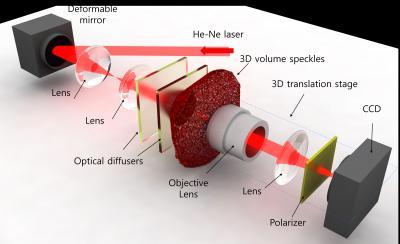
There was a time when it was believed that light scattering was a serious obstacle to the normal recognition of projected objects. But as our practice shows, modern 3D displays can be significantly improved by learning to control this dispersion. Correct scattering allowed us to increase both the viewing angle and the total resolution,- notes Professor Jonken Park .
Griffith University, Swinburne University of Technology, Australia. Holographic display based on graphene.
Scientists armed themselves with the Gabor method, mentioned at the very beginning of this post, and made a high-resolution 3D holographic display based on a digital holographic screen consisting of small dots that reflect light.
Pros - viewing angle of 52 degrees. For the normal perception of the picture, no additional pribludy in the form of 3D glasses and other things are needed.
By the way, about 52 degrees. The viewing angle is greater, the less pixels will be used. Graphene oxide is processed by photoreduction, which creates a pixel that can bend color for holokartinka.
The developers believe that such an approach in due time could usher in a revolution in the development of displays, especially on mobile devices.
University of Bristol, UK. Ultrasonic holography.
An object is created in air using a variety of ultrasonic emitters aimed at a cloud of water vapor, which is also created by the system. The implementation, of course, is more complicated than in the case of the familiar screen, but still.
- the fog is created not just by drops of water, but by drops of a special substance.
- This substance is illuminated by a special lamp.
- The lamp modulates a special light.
The result is a projection of the object, which can not only be viewed from all sides, but also touched.
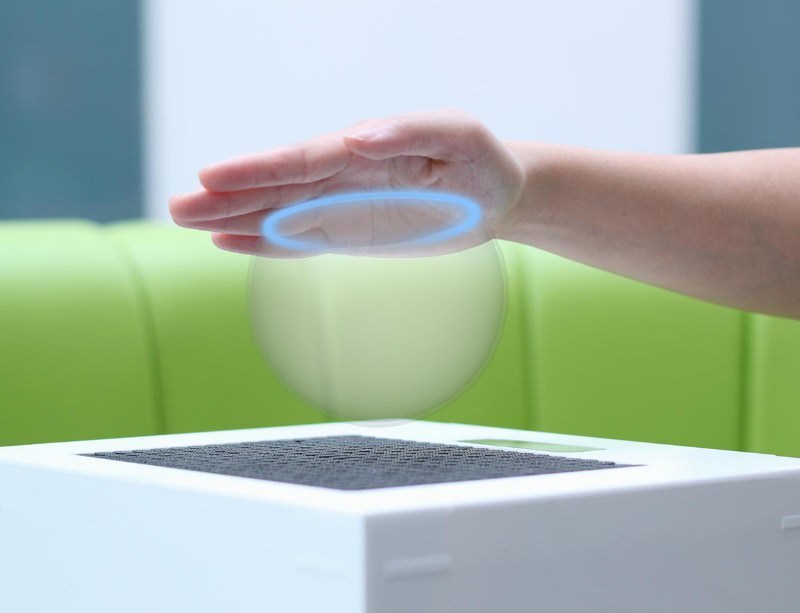
The oscillation frequency of such an interference pattern is from 0.4 to 500 Hz.
One of the main areas of activity in which developers suggest the beneficial use of technology is medicine. The doctor will be able to “feel” it on the basis of the medical records and the simulated organ. It will also be possible to create three-dimensional projections of any products at presentations. A positive effect is also predicted when replacing similar displays with touch displays in public places (electronic menus, terminals, ATMs). How difficult and expensive it will be to implement - of course, this is the second question.
And so what entertainment services of a certain direction can reach - it is scary (but interesting) to think.
Vancouver, Canada. Interactive holographic display.
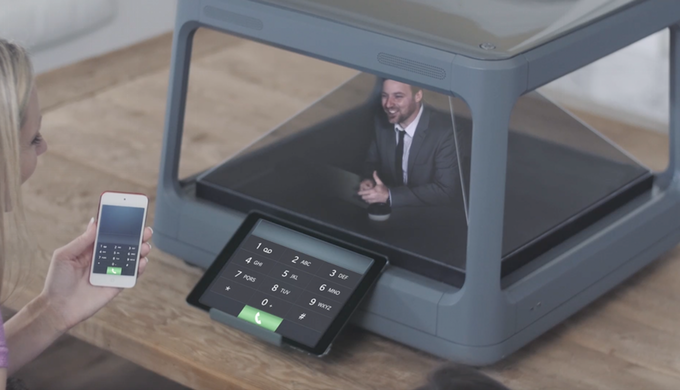
What do you need:
- mobile device
- HDMI or wifi
- donate $ 550 on Kickstarter to these guys (they wanted to raise $ 50,000, they successfully raised almost $ 300,000).
As you can see, interest in holography, once launched by science fiction writers, does not think to stop - on the contrary, it is only gaining momentum.
It is possible that in the very near future, in almost every apartment there will be holographic screens created using one of the methods described above. Or on the basis of something new, because scientists continue to invent more and more new materials, which are an excellent tool for the development of technology.
Now it’s hard to imagine a modern person without a smartphone in his pocket, maybe soon a wristwatch with a holographic projector will become an integral element. Or a new round of development of smart homes and smart cars will show how else you can use the capabilities of holography.
The latter, by the way, is no longer just a fantasy - for example, we createthe first holographic navigator for cars , providing the display of augmented reality on the windshield in the driver’s focus area. And we will tell something about him in one of the following posts.
In order not to miss - subscribe to our blog . And if you have any questions - feel free to ask them in the comments.
